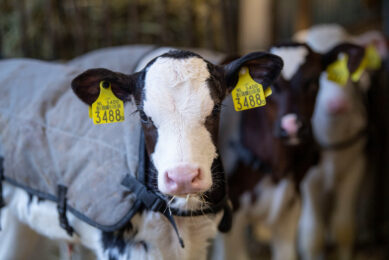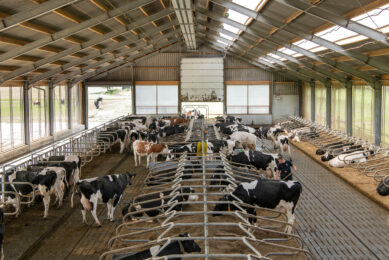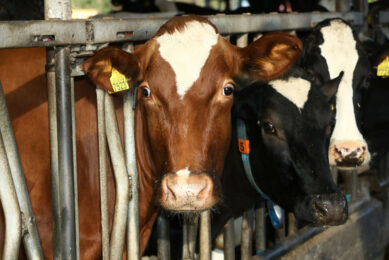Feed and management: Proper dairy calf care
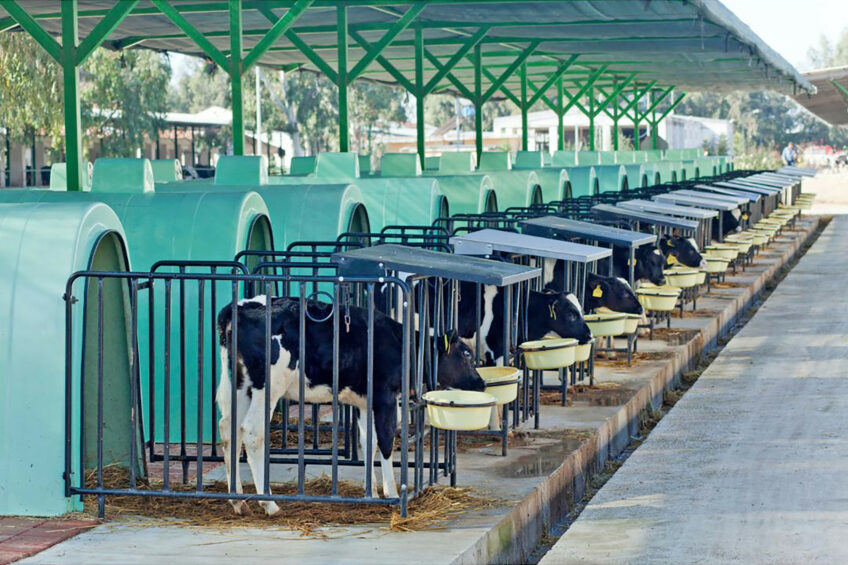
Calf diarrhoea is a problematic disease due to its multi-factorial nature which affects calf performance and farm economies worldwide. Here, we look at feed and management strategies that have a positive impact on the health of younger calves as well as calves in a later stage of life.
The major cause of diarrhoea in calves younger than 21 days of age is E.coli which interferes with the intestine to produce so-called attaching lesions. This leads to a loss of villous structure at the site of attachment, reduced nutrient absorption, increased fluid loss, and decreased enzyme activity, which in turn results in reduced performance and – in severe cases – high mortality.
Other pathogens such as rotavirus, coronavirus, type II Cryptosporidium parvum, Salmonella enterica, and Enterica serovars may also be involved. However, development and activity of these pathogens can be mitigated through proper feeding, management, and therapeutic strategies.
Impacts of diarrhoea
The passage of digesta through the GI tract takes about 48 hours in normal calves but only 6 hours in diarrhetic calves, probably due to shorter retention time in the large intestine and resultant more frequent defecation. Average faecal weight is about 20-fold that of normal calves but may be as high as 40-fold in severely affected animals. This is often coupled with increased excretion of water, dry matter, fats, proteins, and minerals (Table 1).
Because of the reduced nutrient utilisation and reduced biological value of the diet, along with the pathological and functional changes in the GI tract attributed to the diarrhoea-causing pathogens, infected animals suffer from the following symptoms:
- Watery stools that may be red, brown, green, or yellow.
- Calves are often weak and depressed and may lose their desire to nurse.
- Calves develop a sunken-eyed appearance as a result of dehydration. The bony prominence of their hips, shoulders and ribs may become more apparent as the calves dehydrate and metabolise their body fat reserves.
- Calves may stagger or sway as they walk. This often reflects weakness, low blood sugar concentrations, and/or alteration of the acid-base balance of their bodily fluids.
Mortality caused by diarrhoea may be a result of localised infection and/or septicaemia and may vary from season to season and from one farm to another. It generally ranges from 10-35%, and may sometimes be as high as 60% under unfavourable farming conditions. In economic terms and under all management scenarios, the loss of only one calf may cost up to US$580, the equivalent of the average value of raising the calf to weaning and caring for the dam before and after parturition.
More importantly, several of the agents that produce diarrhoea in calves can also produce serious diseases in people such as haemorrhagic colitis and haemolytic uremic syndrome, particularly in immunocompromised individuals.
Feeding strategies
The calf should receive around 2 litres of colostrum from the dam 6-8 hours after birth, given that the calf’s digestive system will absorb the colostral antibodies in progressively decreasing amounts for only the first 24 hours or so after birth. It is important to ensure that the calf receives the required amount of colostrum.
The types of antibodies present in the colostrum will depend on the cow’s previous exposure to pathogens. To provide maximum disease resistance for the calf, a cow herd vaccination programme must be developed to ensure that antibodies specific to the disease problem are present in the colostrum of calving cows.
Milk intake should be 10% of the bodyweight daily for the first 7-10 days. Calves should be fed on a regular schedule with fresh whole milk or good quality milk replacer. Milk replacers containing milk that has been overheated should be avoided as this appears to be a major factor in allowing undigested whey proteins to escape into the duodenum, thus providing a favourable medium for the rapid growth and proliferation of pathogenic bacteria.
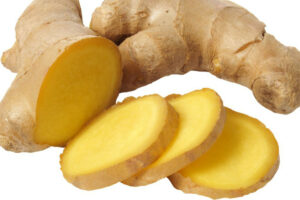
The use of high grain diets in a later stage can promote an overgrowth of E.coli within the digestive tract, causing diarrhoea. High grain diets also allow fermentation acids to accumulate in the digestive system and cause ulcers. The infectious bacteria then pass through the ulcers into the bloodstream and eventually into the liver where they cause abscesses.
Some herbal extracts can be used in cases where diarrhoea is not severe and the animal is not dehydrated. Examples of these herbs include stone apple, dysentery rose, black catechu, and ginger. These act by forming a protective layer on the mucosal surface of the intestines and regulate the peristaltic movement of the intestines, thereby reducing the severity of diarrhoea.
Management and therapeutic strategies
- When diarrhoea occurs in a group of calves, every effort should be made to isolate the affected animals and feed them last.
- The calf pens should always be kept clean. With daily cleaning, the incidence of diarrhoea may be reduced by 15-20% compared to cleaning only 2 or 3 times per week.
- Portable calf hutches with overhead shelter have proven to be very successful as they afford isolation and can be moved to clean ground when necessary.
- Feeding equipment should be thoroughly scrubbed and sanitised after each use.
- If an infected animal is in danger of dehydration, administration of clean water or barley water at intervals of 2-3 hours helps to compensate for the loss of body fluids.
- Internal parasite infection can also be a predisposition to diarrhoea and should be controlled by all known means.
- Prolonged and/or high-dose antibiotic treatment of calves is not recommended as it can lead to an imbalance between the types of GI microorganisms and also causes villous change with resultant malabsorption.
- Finally, consultation with a qualified vet may be necessary in some cases. This would lead to specific solutions for most diarrhoea-related problems.
Join 13,000+ subscribers
Subscribe to our newsletter to stay updated about all the need-to-know content in the dairy sector, two times a week.




